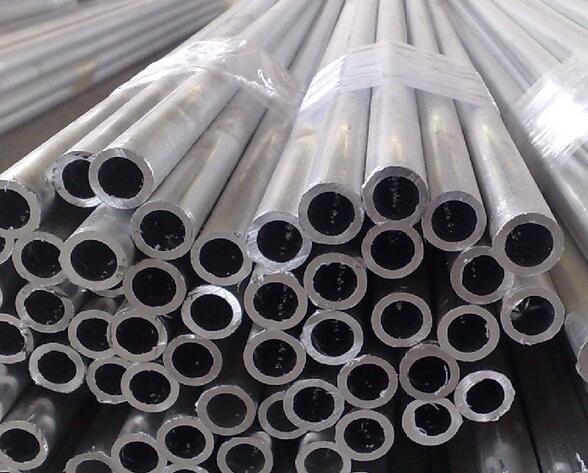Aluminum muff tube for extruded fin tube
What is aluminum muff tube?
An aluminum muff tube is used in the extruded fin tubes to manufacture the fins and enhance their performance in heat transfer applications.
An aluminum muff tube, also known as an aluminum sleeve or jacket, is a component used in the construction of extruded fin tubes. Extruded fin tubes are heat exchanger tubes with fins that are integral to the tube surface, providing enhanced heat transfer capabilities. The aluminum muff tube serves several purposes:
1. Protection:
The aluminum muff tube acts as a protective layer for the inner tube, shielding it from corrosion and physical damage.
2. Heat Transfer:
Aluminum is an excellent conductor of heat. The muff tube aids in efficient heat transfer between the tube and the surrounding medium.
3. Durability:
Aluminums resistance to corrosion increases the longevity of the finned tube, especially in harsh environments.
4. Manufacturing Process:
During the manufacturing process, the aluminum muff tube is inserted over the base tube (which can be made of a different material such as copper or steel). The process creates an integral bond between the fins and the base tube, ensuring efficient thermal performance.
Applications:
HVAC Systems: Used in heating, ventilation, and air conditioning systems to improve energy efficiency.
Industrial Heat Exchangers: Commonly found in power plants, chemical processing plants, and other industrial settings.
Refrigeration: Applied in refrigeration units and systems to enhance cooling efficiency.
Advantages:
Enhanced Heat Transfer: The fins increase the surface area, facilitating better heat dissipation.
Corrosion Resistance: Aluminums natural resistance to corrosion extends the life of the heat exchanger.
Lightweight: Aluminum is lighter than many other metals, making the heat exchangers easier to handle and install.
Construction of Aluminum Muff Tube Extruded Fin Tube
1. Base Tube:
Typically made of materials like copper, steel, or stainless steel, chosen for their thermal conductivity and mechanical properties.
2. Aluminum Sleeve (Muff Tube):
The aluminum sleeve is placed over the base tube. Through the extrusion process, the aluminum is bonded to the base tube, forming integral fins.
3. Fin Configuration:
The fins can be of various shapes and sizes, designed according to the specific heat transfer requirements. Common configurations include plain, serrated, and helical fins.
4. Bonding Process:
Extrusion involves pushing the aluminum sleeve over the base tube under high pressure, ensuring a tight mechanical bond. This process guarantees that the fins are an integral part of the tube, providing efficient heat transfer and mechanical stability.
Using an aluminum muff tube in extruded fin tubes enhances the efficiency and durability of heat exchangers, making them suitable for various industrial and commercial applications.
Typical aluminum material grades that are commonly used for muff tubes:
1. Aluminum Alloy 1050:
Composition: Commercially pure aluminum (99.5% aluminum).
Properties: Excellent corrosion resistance, good electrical conductivity, and high thermal conductivity.
Applications: Ideal for applications requiring high corrosion resistance, such as in harsh environments or where chemical exposure is a concern.
2. Aluminum Alloy 1060:
Composition: Commercially pure aluminum (99.6% aluminum).
Properties: Similar to 1050, 1060 offers high thermal conductivity and good electrical conductivity.
Applications: Frequently used in heat transfer applications where efficient thermal conductivity is crucial.
3. Aluminum Alloy 1100:
Composition: Commercially pure aluminum (99.0% aluminum) with slight alloying elements to enhance its properties.
Properties: High thermal and electrical conductivity, excellent corrosion resistance, and good formability.
Applications: Widely utilized in heat transfer and cooling applications, including HVAC systems and industrial heat exchangers.
4. Aluminum Alloy 6063:
Composition: Alloyed with magnesium and silicon.
Properties: Known for its excellent extrudability, good mechanical properties, and high corrosion resistance.
Applications: Commonly used for extruded components where shaping complex profiles is necessary, making it ideal for muff tubes in various configurations.
How to choose the appropriate aluminum alloy for muff tubes
1. Corrosion Resistance:
Determine the level of exposure to corrosive environments. Alloys like 1050 and 1100 offer excellent resistance to corrosion.
2. Thermal Conductivity:
For applications requiring efficient heat transfer, alloys like 1060 and 1100 are preferable due to their high thermal conductivity.
3. Formability and Extrudability:
If complex shapes and profiles are required, 6063 is an excellent choice due to its superior formability and extrudability.
4. Application Environment:
Consider the specific environment in which the muff tube will be used, such as exposure to chemicals, temperature variations, and mechanical stress.
The aluminum muff tube is an integral component of extrudedtype fin tubes, providing protection, structural support, and maintaining the overall performance of the heat exchanger or other equipment where these tubes are used.


